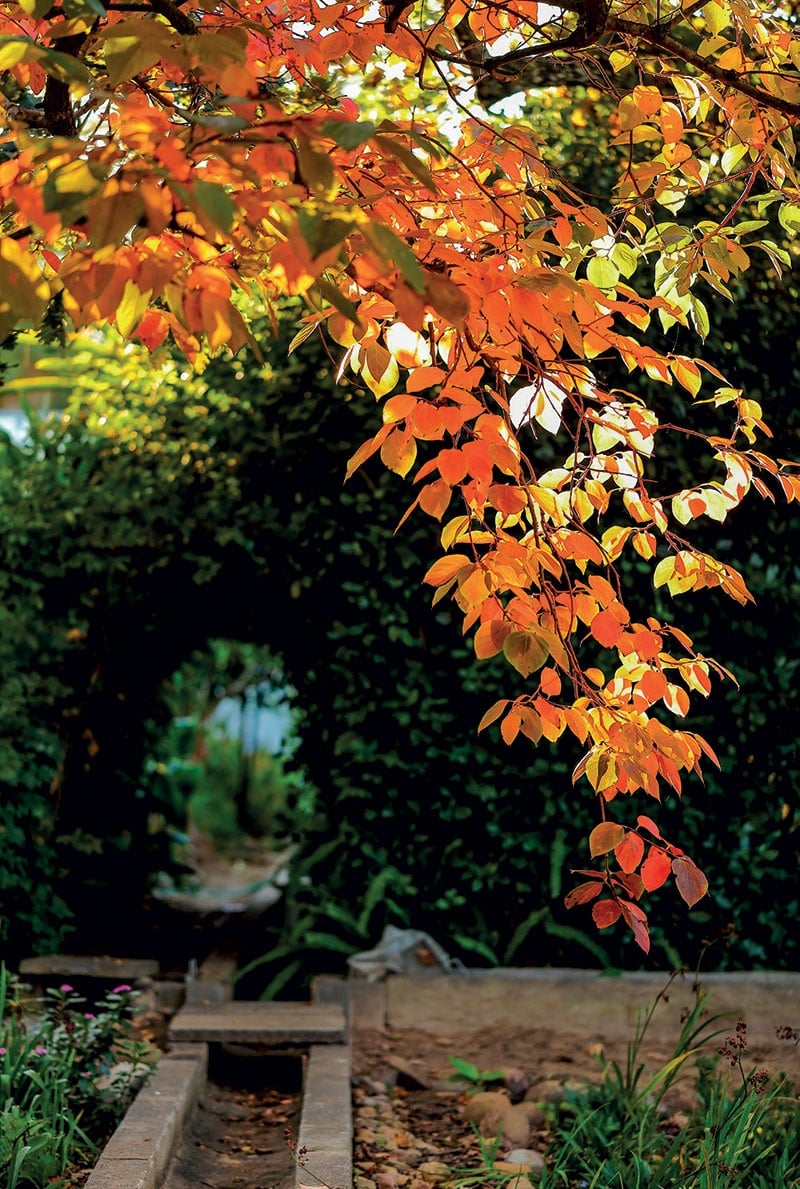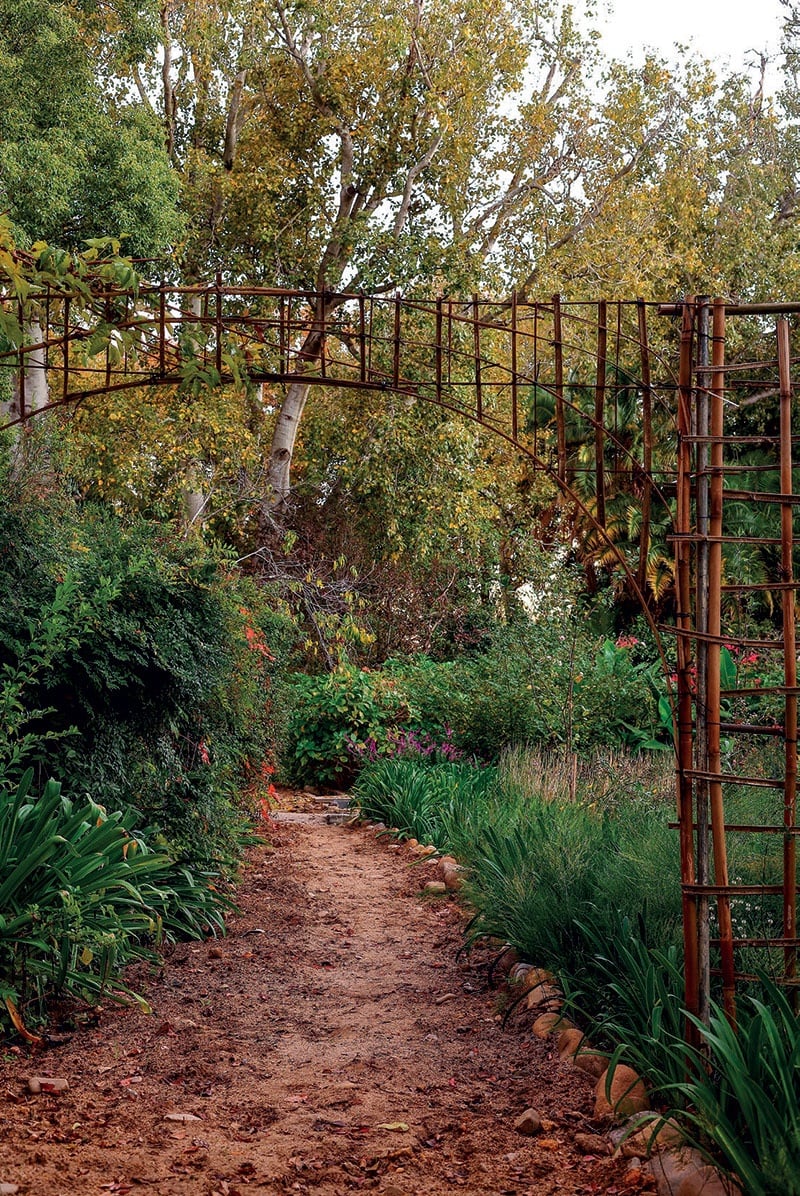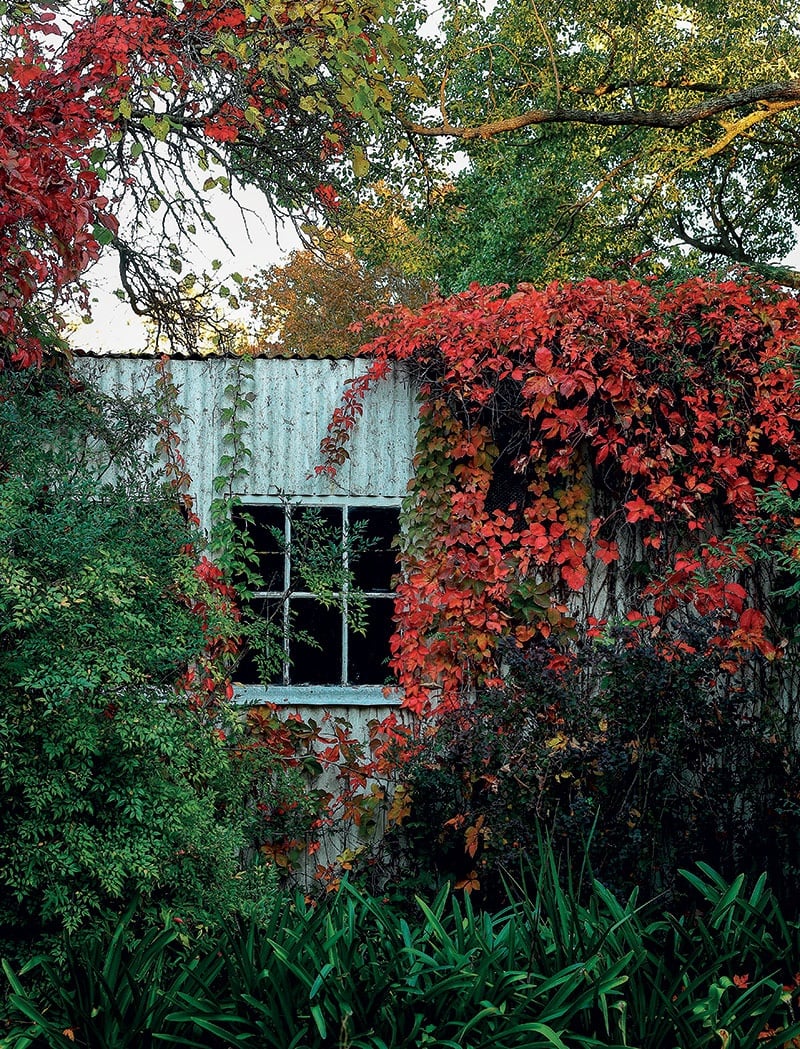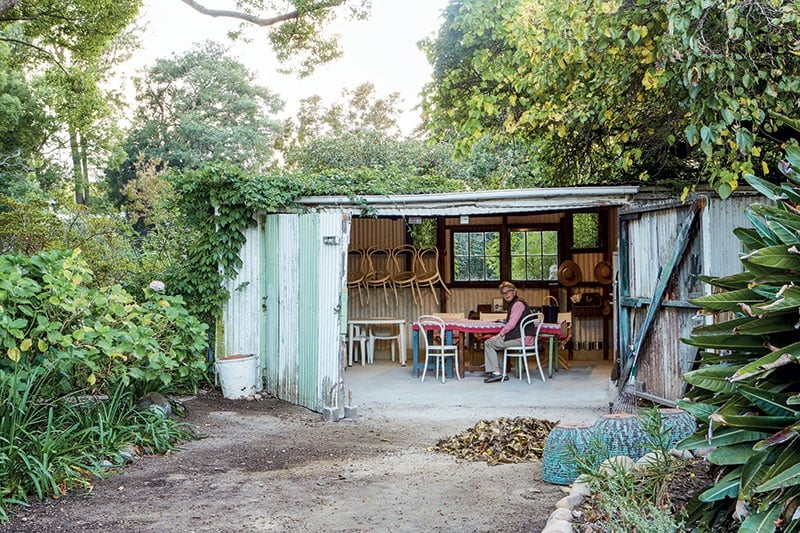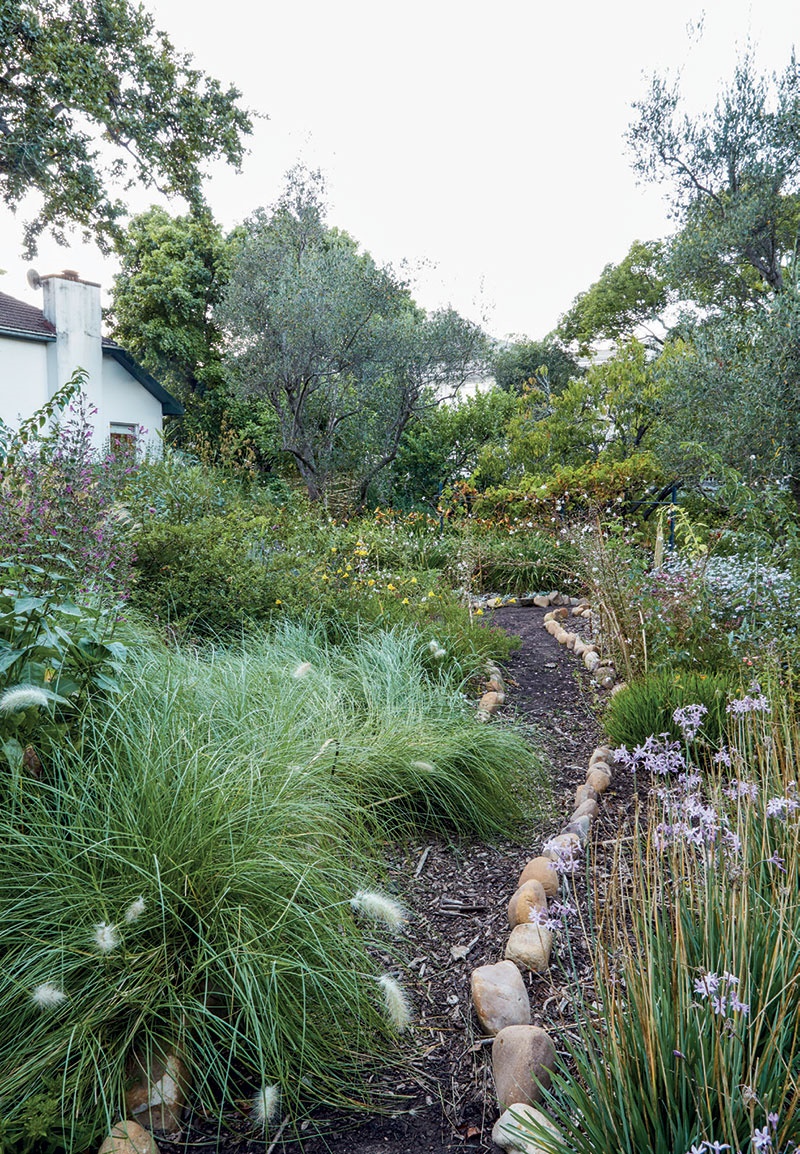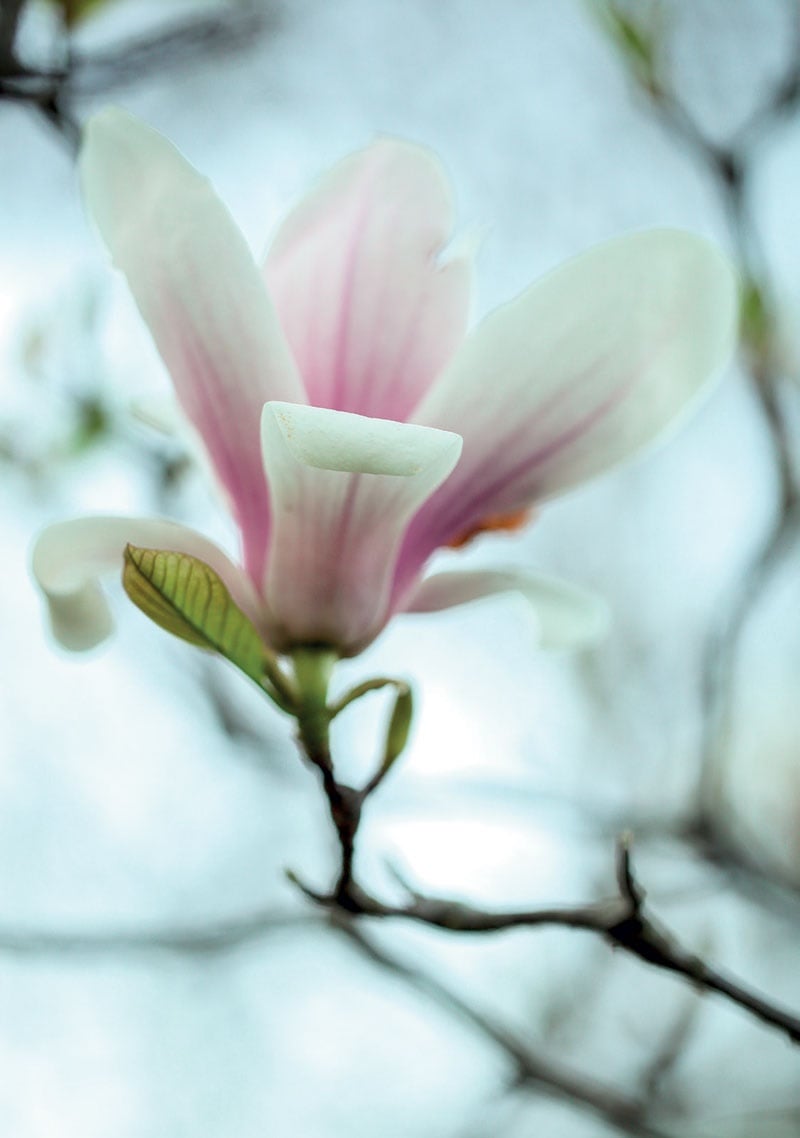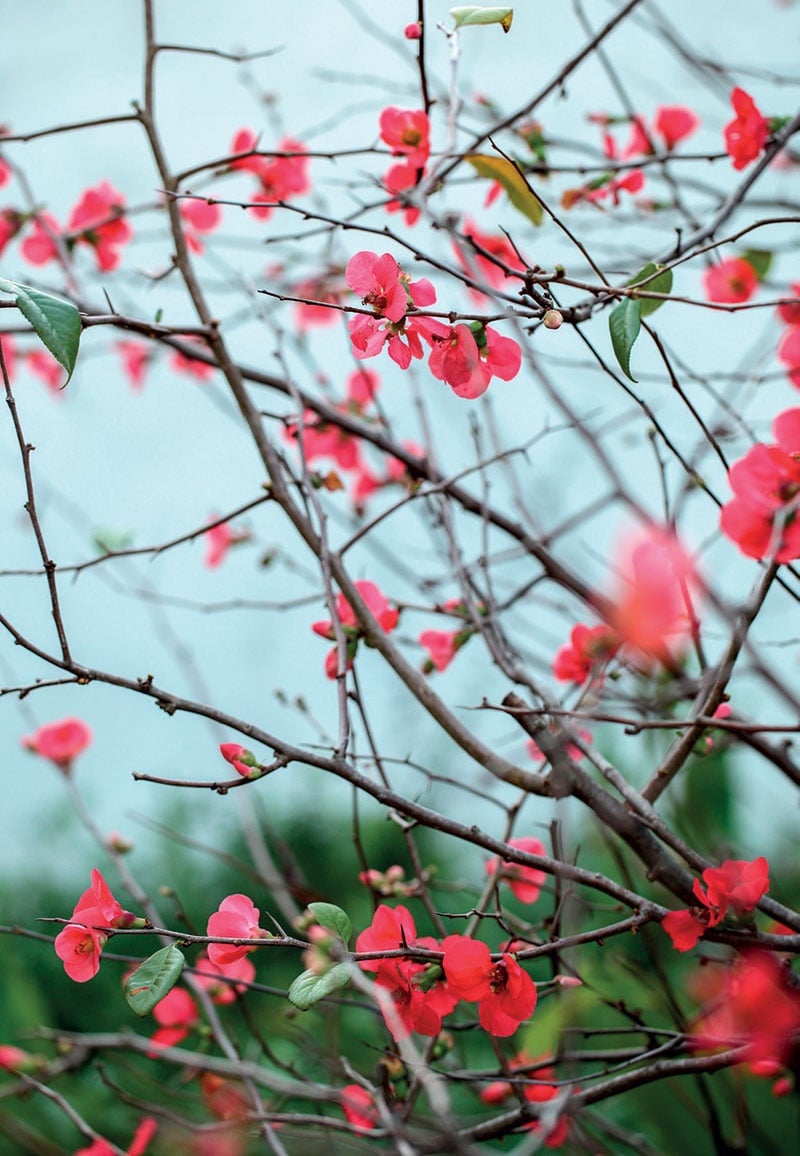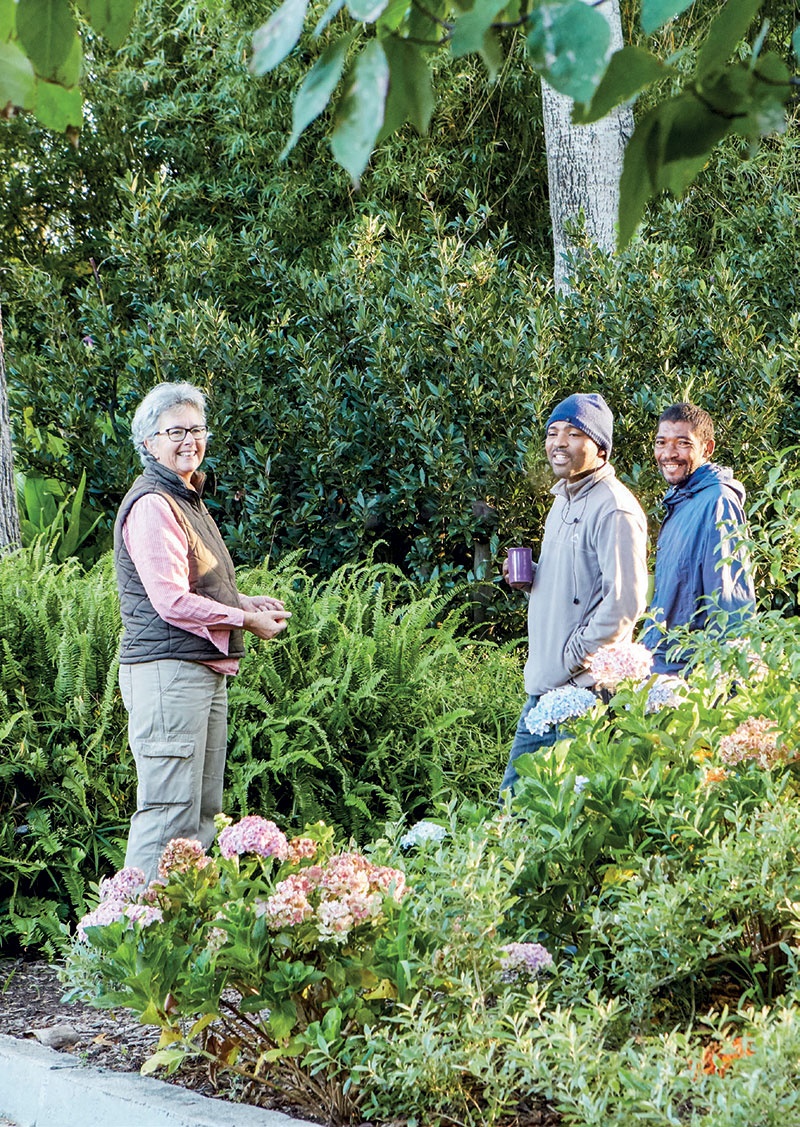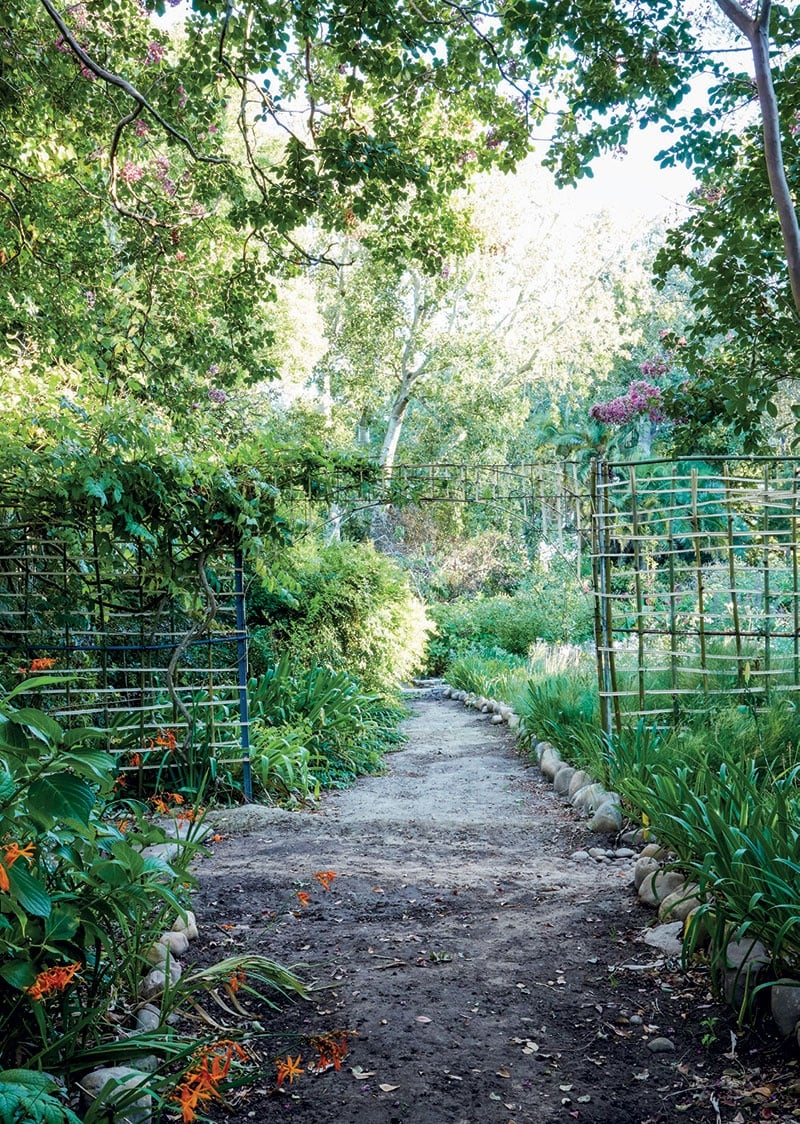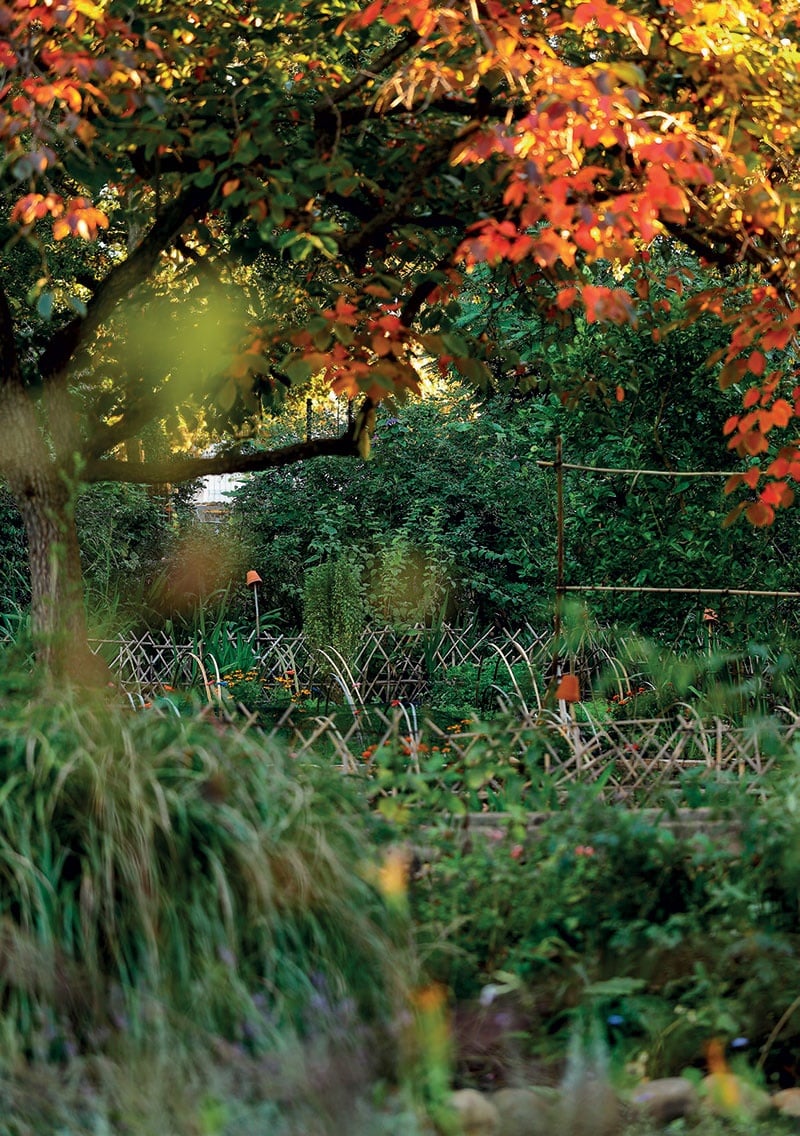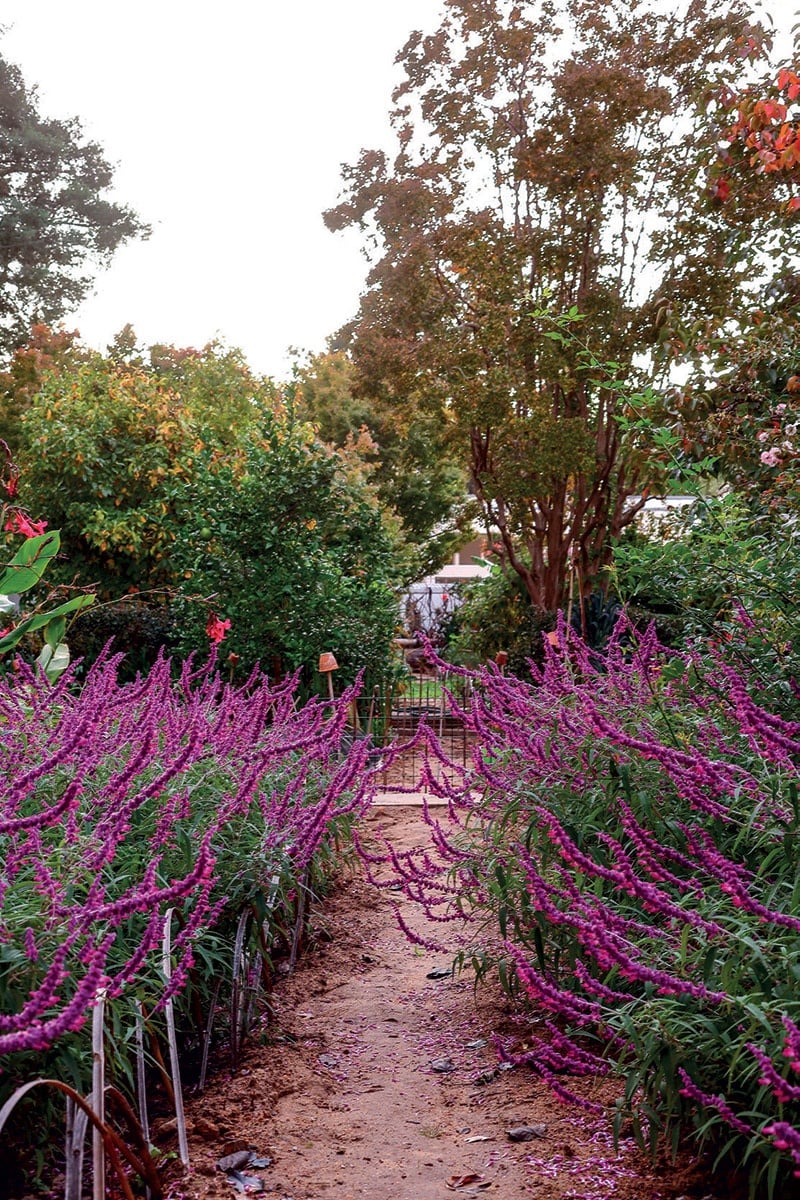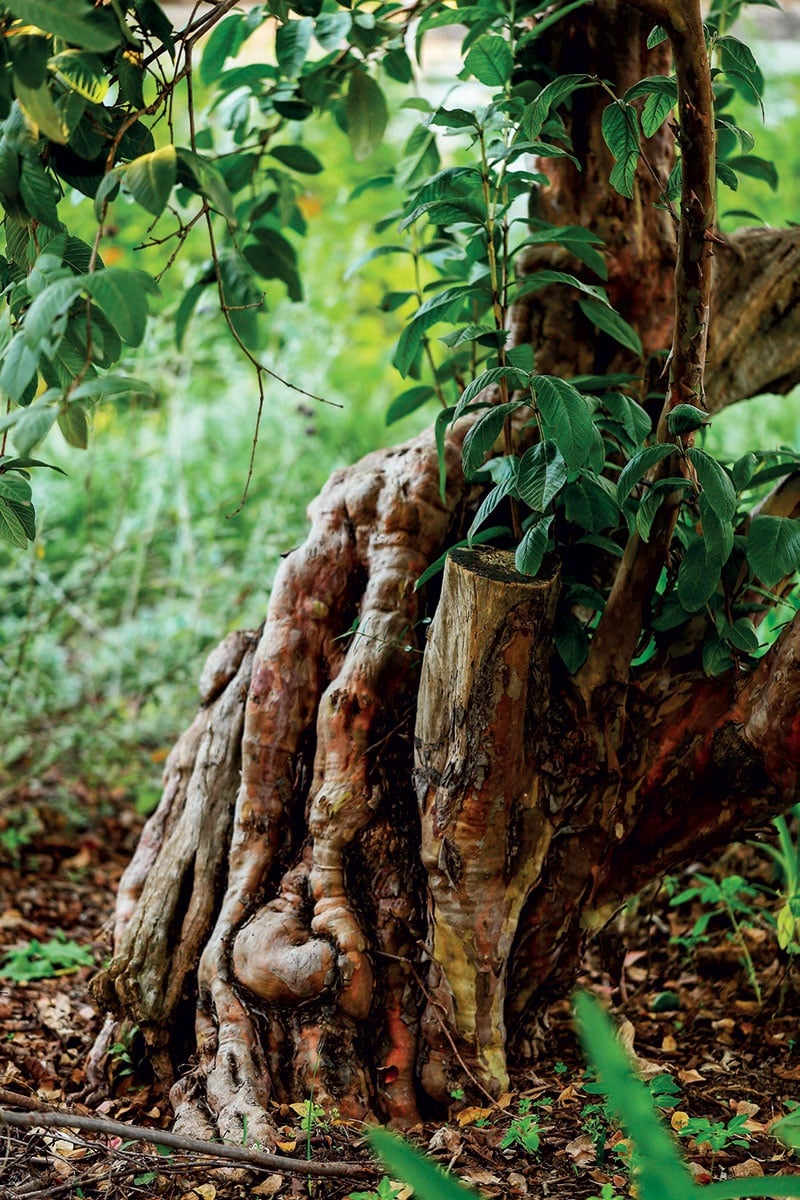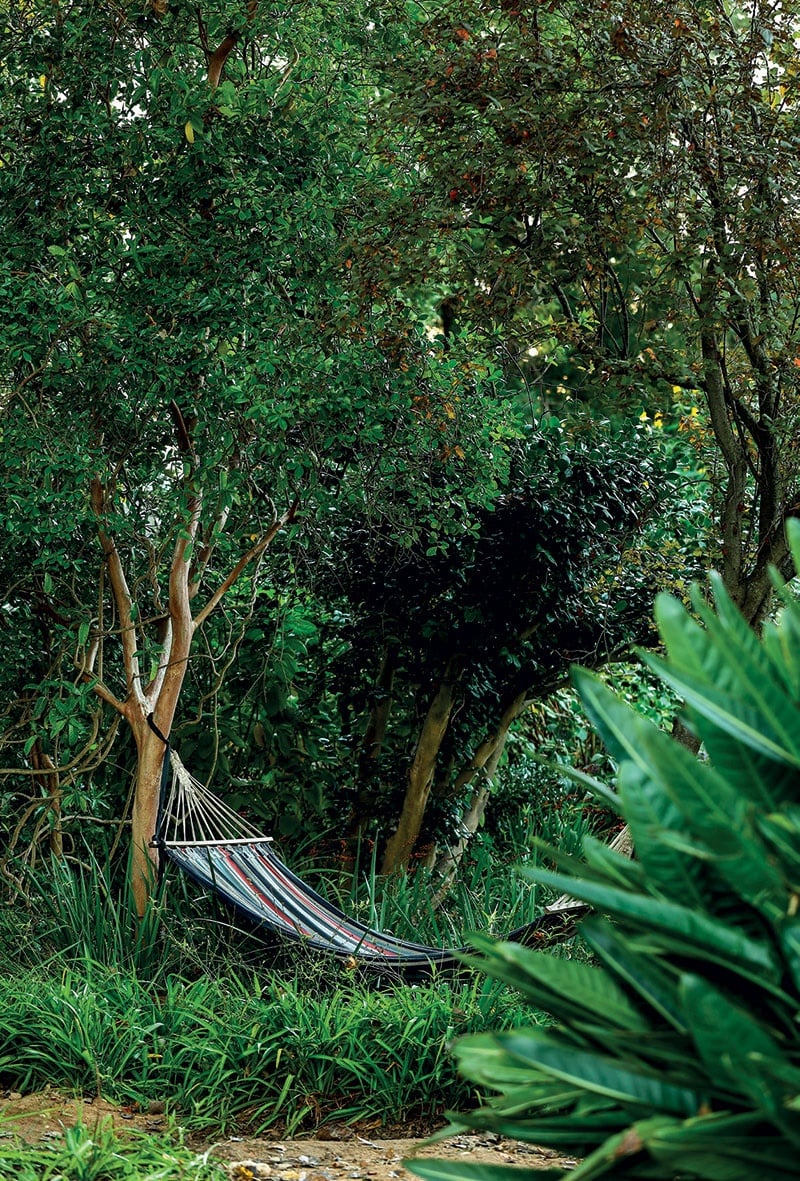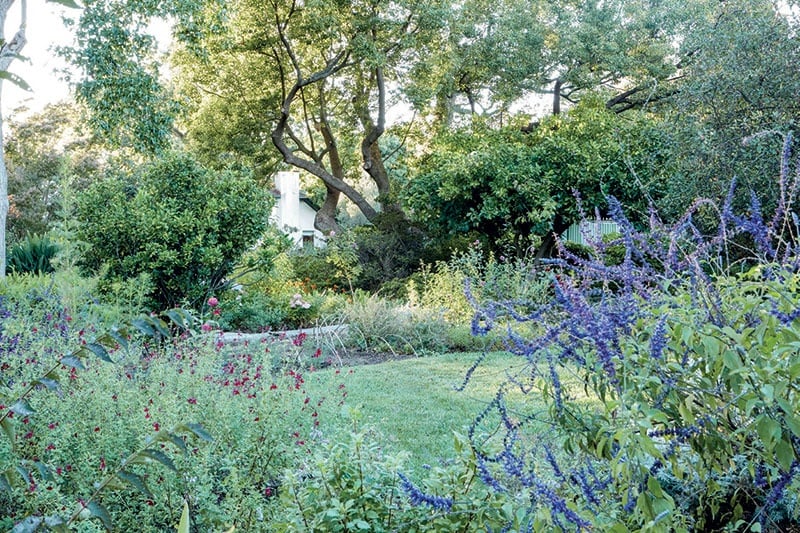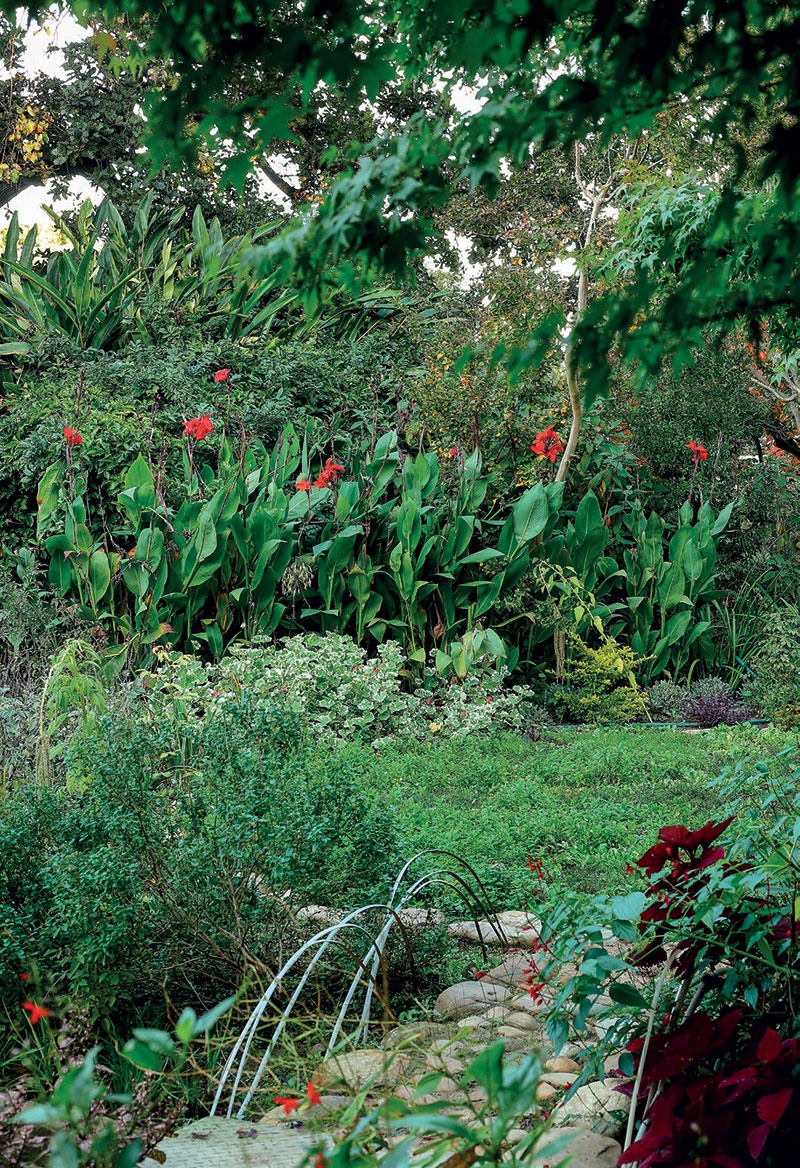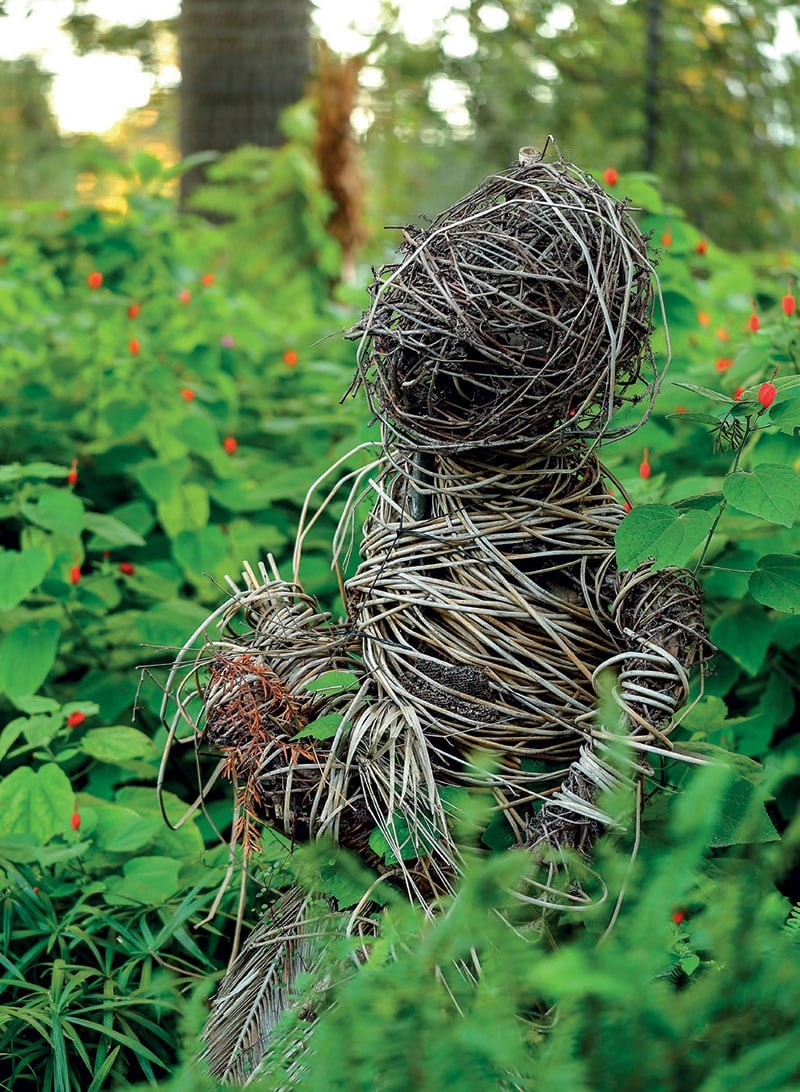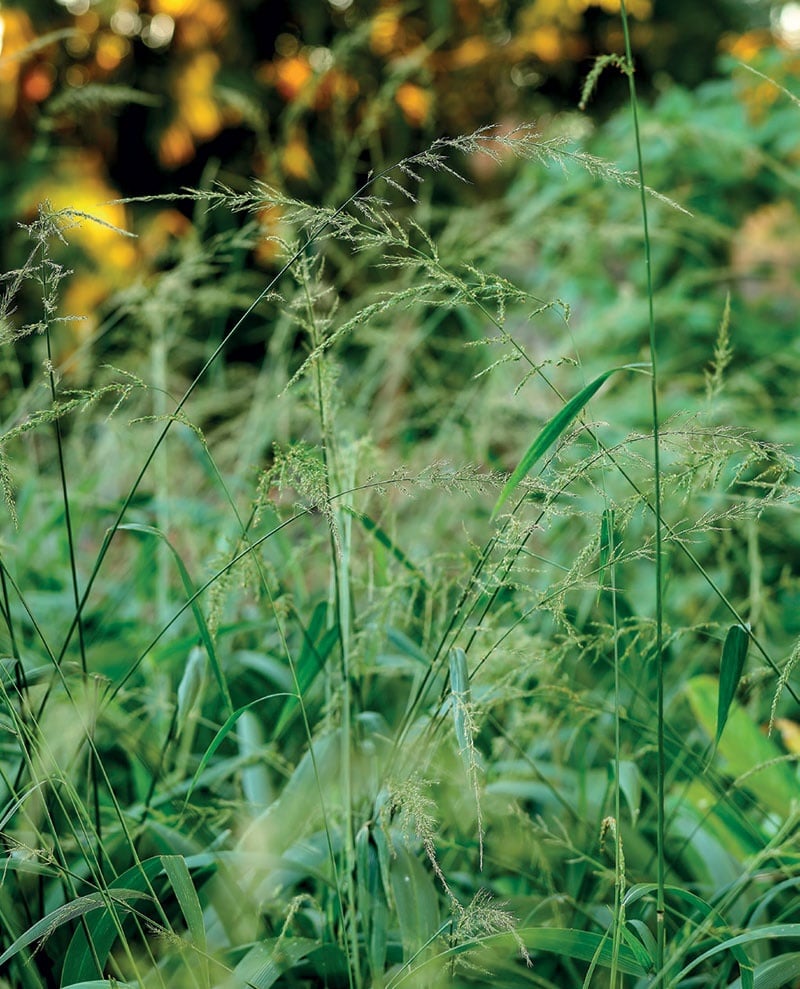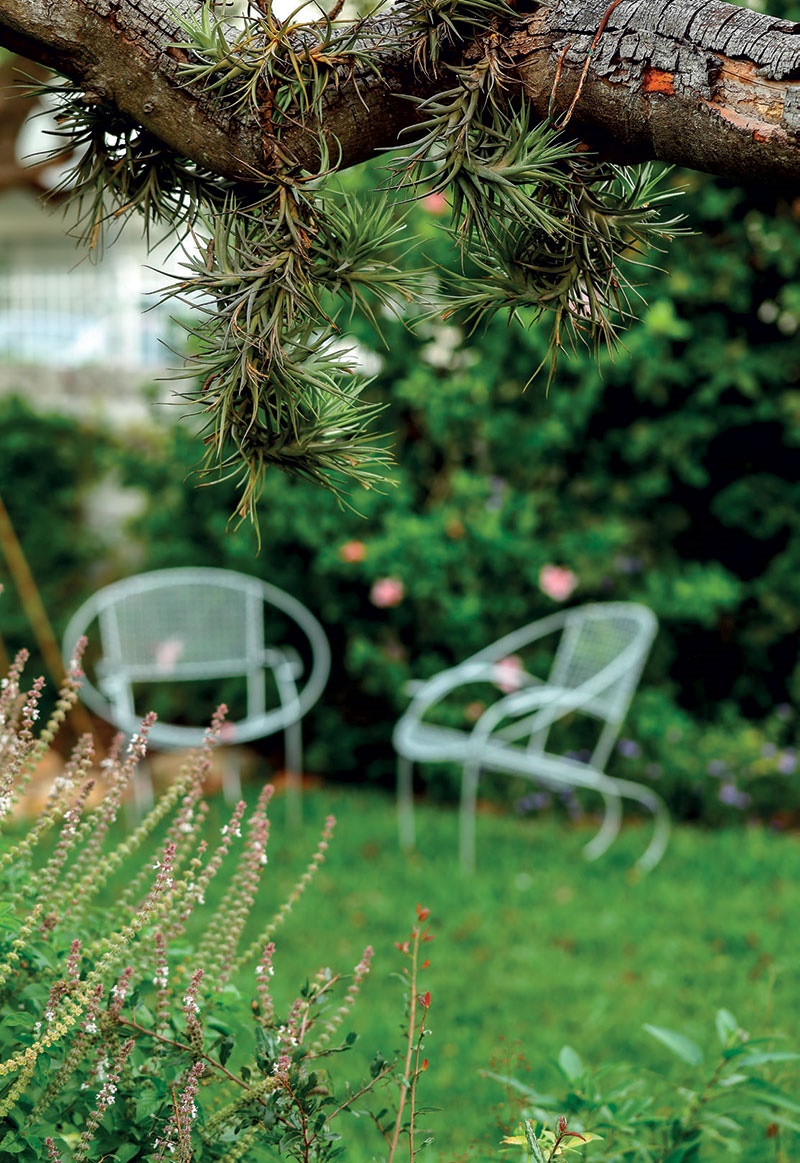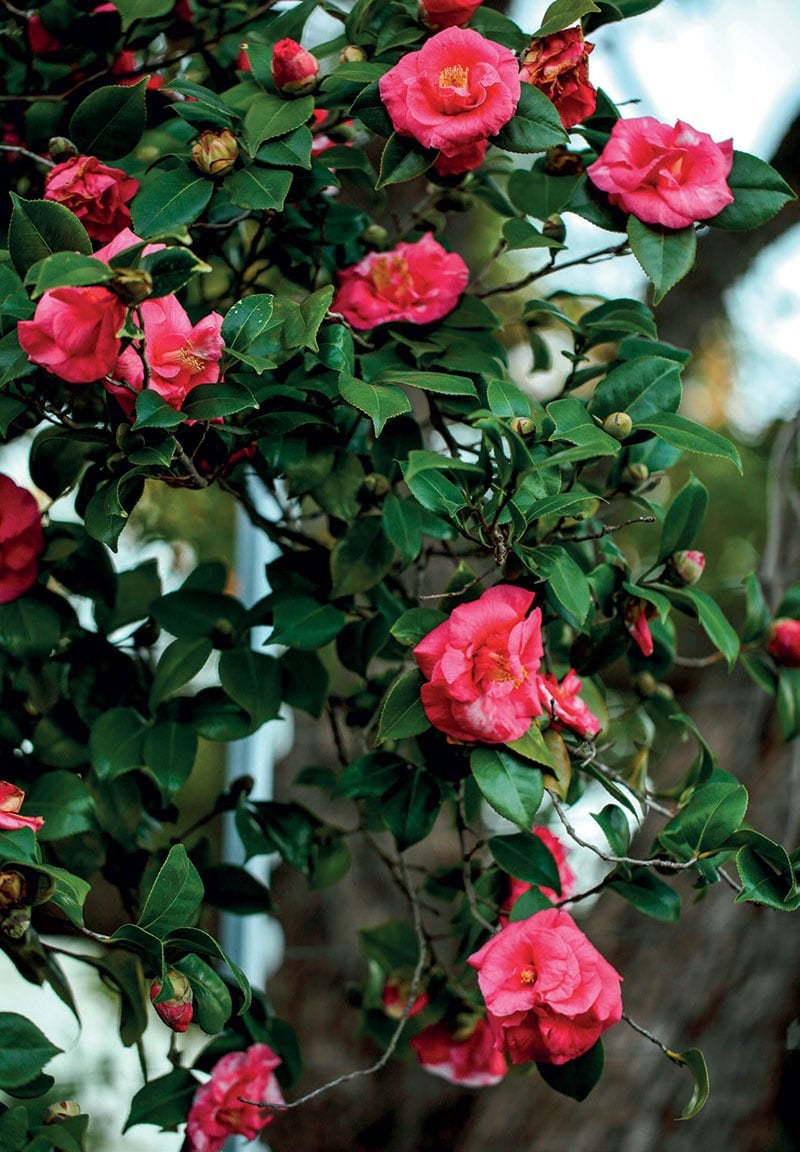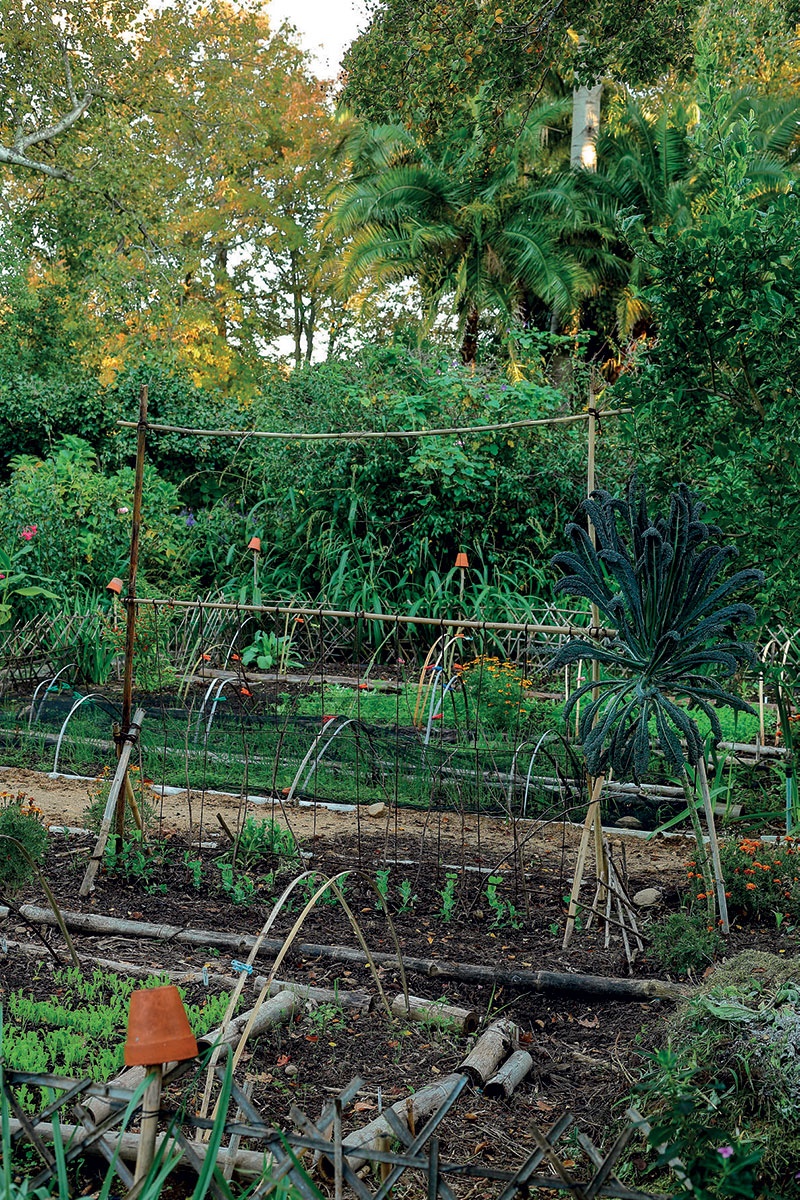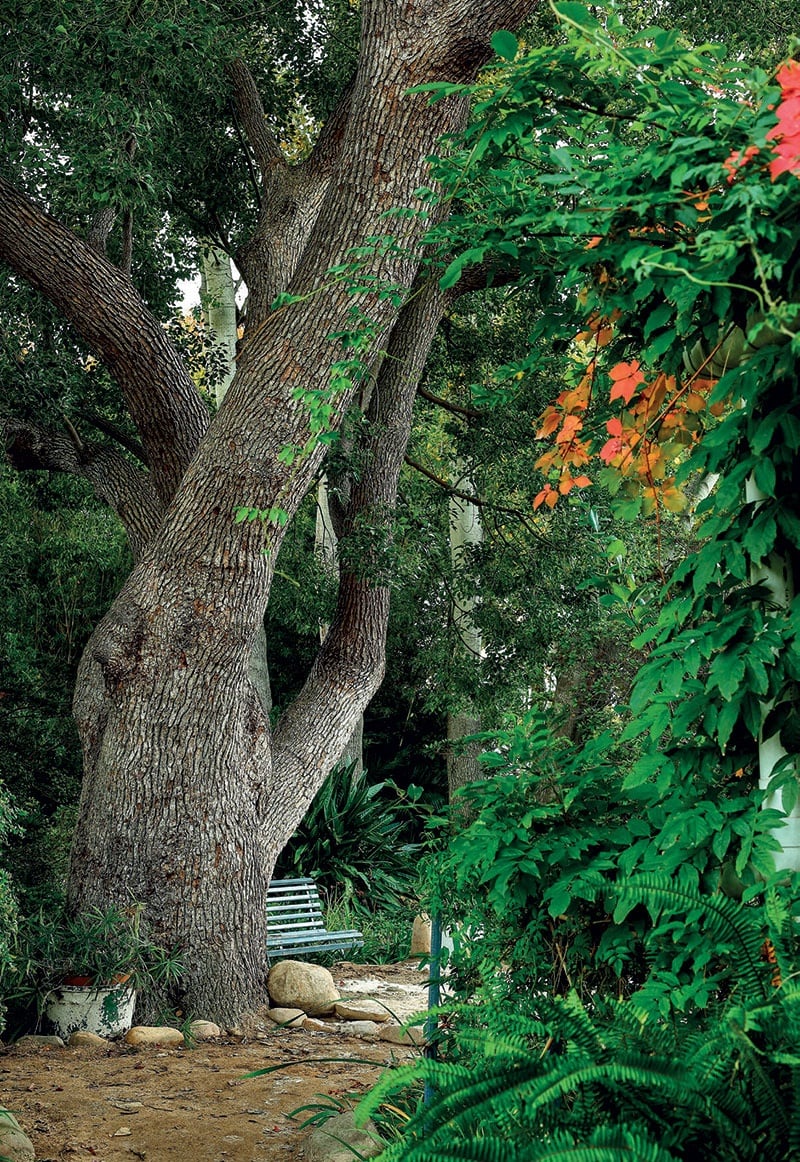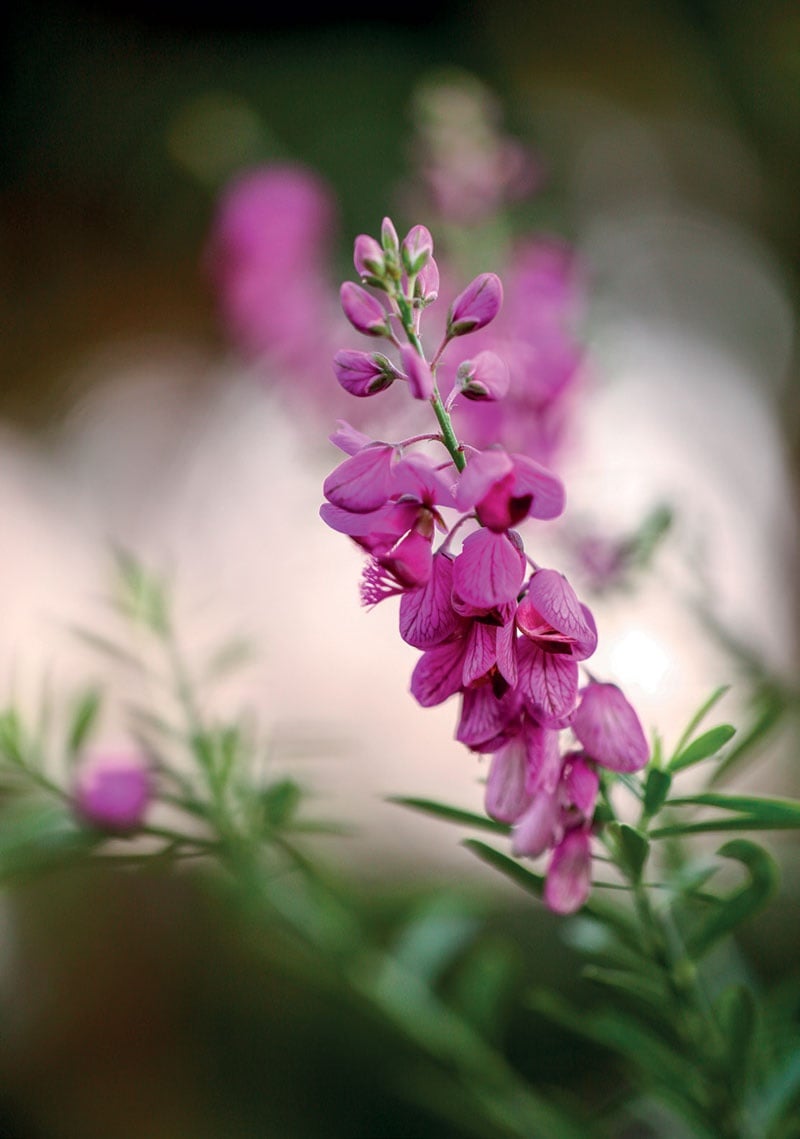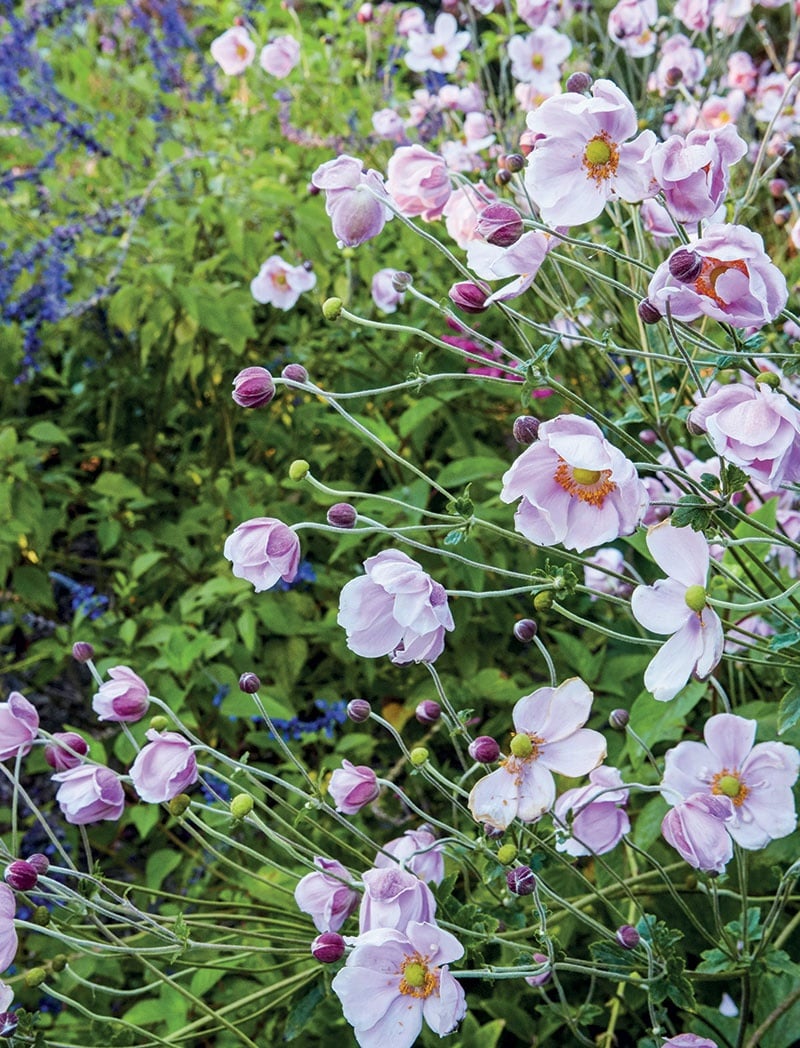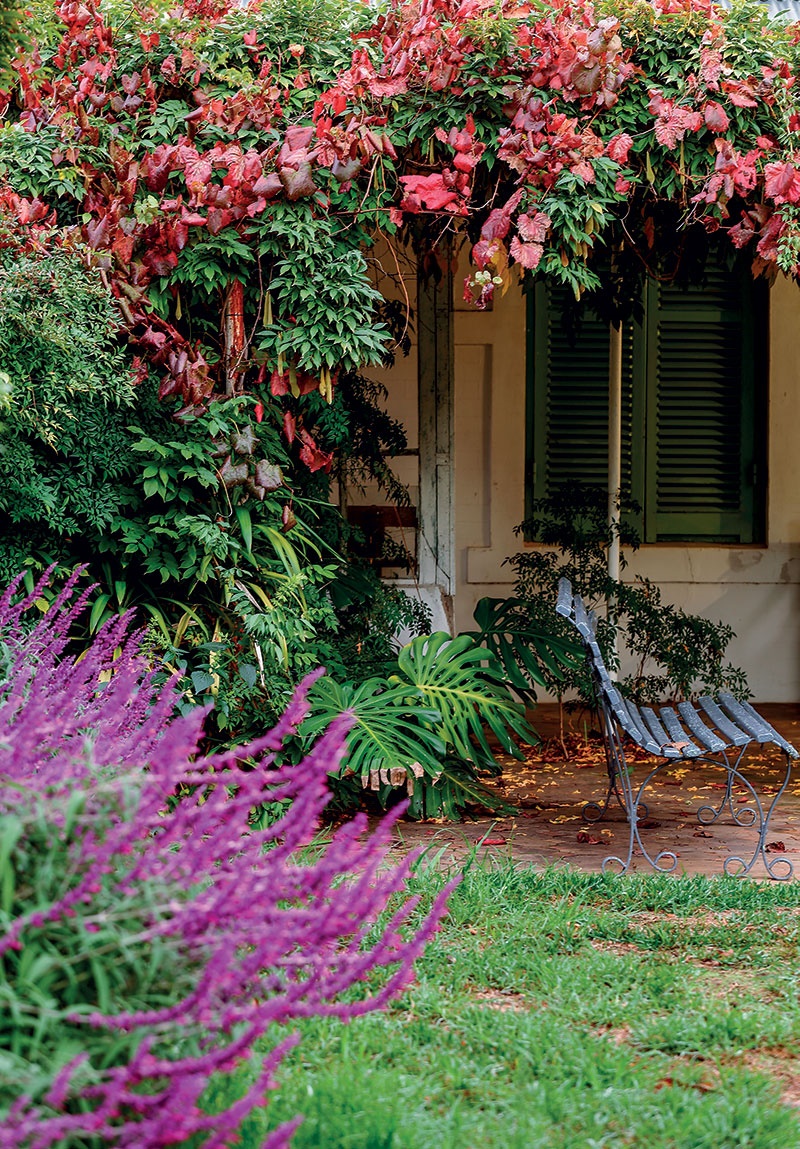
Photographs Francois Oberholster and Kosie Jansen van Rensburg
In Herte Street in the heart of old Stellenbosch lies a garden bigger and more beautiful than you could imagine.
And it’s largely thanks to the legacy left behind by Dorothy Johnman who, upon her death in 1995, bequeathed her house and garden to be preserved for posterity.
The restoration of the garden began about five years ago. In the early days, properties in the central part of Stellenbosch boasted huge gardens. Unfortunately, most of them had to make way for developments but the Johnman garden is one of the few that still exists. Its preservation is thus vital, as it tells the story of this historic part of Stellenbosch.
Local landscaper Pietman Diener was involved in the restoration of the garden from the get-go, while Paula Raubenheimer, who lives on the property, takes care of the day-to-day maintenance, ably assisted by two workers.
“The garden was overgrown and sorely neglected,” says Pietman. “There were numerous self-sown trees, the fruit trees were old and many of the roses for which the garden was known, had disappeared over the years. “
“We decided to restore the garden to its former glory – and because of the home’s Victorian architecture, we initially looked at gardens from this era to see what needed to be done. In the end, however, we didn’t strictly adhere to that time period but rather transformed the garden into a green paradise, as Dorothy was a true plant and flower enthusiast.”
Pietman and his team retained most of the original trees, cutting them back to expose the framework of the garden. The self-sown trees were felled to let in more light.
“Then we started with the layout of the beds. Because the garden is quite big and labour was limited, we tackled it little by little,” he explains. “The initial planting was kept simple but as the garden evolved, we started selecting a wider variety and more interesting plants. Fortunately, we have sufficient water to irrigate it all. “The old parts of Stellenbosch have access to leiwater from the Eerste River in summer. This enables us to keep the garden looking good all year round.”
Virginia creeper turns a deep crimson in autumn.
The excavation of the well unearthed piles of river stones that were used as edging for pathways.
Magnolias bloom in winter.
Reeds and poles on the property provide a framework for climbing plants.
An ongoing process
Paula, who lives with her husband Carl in a beautiful heritage house on the Johnman property, has no formal gardening experience. She relates how she was sitting at her desk one day, looking out the window at the garden...
“I realised that the gardeners needed help and offered to get involved. I could no longer sit back and observe. From then on, I became responsible for the upkeep and maintenance of the garden. And I absolutely love it. I don’t know many plant names but I’m learning every day. I love seeing how the garden is progressing.”
Although the Johnman garden looks completely different to how it looked in 2014 when the project began, the restoration is an ongoing process.
“It’s an oasis in a rapidly developing area,” explains Pietman. “And apart from the current garden, there’s still a large piece of land behind the row of cottages on the opposite side of the road that we intend to develop; it also belonged to Dorothy. Our plan is to plant lots of fruit trees and cut flowers there, as well as heritage plants.
“In the end, we want the two Johnman gardens to become a horticultural hotspot in South Africa and even the world – a garden that every plant lover will want to visit!”
The Johnman story
David Taylor, chairman of The Charles and Dorothy Educational Trust, tells us more: “Charles and Dorothy Johnman were colourful figures in Stellenbosch’s history, especially in the cultural world. He was an English lecturer at Stellenbosch University and for many years she was a teacher of music and eurhythmics (the rhythmic interpretation of musical compositions through movement) and a gifted cellist who studied at the Royal School of Music in London. Her grandfather Reverend Samuel Hahn, a Rhenish missionary, bought the property in Herte Street and built the house in 1903. Dorothy was three years old when her parents moved in and she lived there until her death in 1995.
Over time, the family purchased more properties in the street. Dorothy inherited these properties and, along with the Smuts and Erskine family of Stellenbosch, bought and restored other houses also located in the same street; all of them have since been declared national monuments.
Upon her death, the properties were placed in a trust. Dorothy requested that her personal residence at 8 Herte Street, also known as Camido, be used as a music centre and that the garden be preserved.”
What grows where
Shade garden
In the shade garden, you can lie on a hammock under the camphor and poplar trees and dream! Plants such as montbretia, Spanish blue bells, Japanese anemones, azaleas and camellias bloom under the trees. (Note: The camphor tree is listed as a Category 3 invasive plant in the Western Cape, which means that trees already in gardens need not be removed.)
Veggie garden
A new vegetable garden was created; Paula’s husband Carl has filled it with a wide variety of edible plants.
Pergola
Circular garden
Scented lawn
Orchard
Some of the original fruit trees, such as custard apples, lemons, guavas and quinces, still exist in the orchard.
Woudtuin
In die woudtuin is ’n natuurlike paadjie wat tussen die bome deur kronkel. Hier groei onder meer ’n reuse-geelhoutboom, ’n Japannese esdoring, populier en die kanferboom. Onderlangs groei spoorsalies, varings, boslelies, Chinese lantern en Setaria-grasse.
In the original garden, the bamboo was used to make ladders. Today, it is used to create interesting structures and climbing supports for plants.
Pomegranates are an old-fashioned favourite.
Plant list
The plant selection for the garden was inspired by the plants that Dorothy loved. Pietman was able to glean invaluable information about what to plant from old photographs, documents found in her house, magazine articles, newspaper clippings and from personal accounts.
He also added plants that an enthusiast such as Dorothy would definitely have approved of and careful consideration was given to ensuring that there would be something in bloom throughout the year. The plants below are not a comprehensive list of what grows in the garden – come and see for yourself what else there is!
Climbers
• Heritage roses such as ‘Cécile Brünner’, ‘Mme Alfred Carrière’ and Rosa roxburghii
• Chinese wisteria (Wisteria sinensis)
• Chinese jasmine (Jasminum polyanthum)
• Granadilla (Passiflora edulis)
Shrubs
• Hydrangea spp.
• Azalea (Rhododendron species and hybrids)
• Camellia spp.
• Roses
• Salvia spp.
• Spurflower (Plectranthus spp.)
• Snowball bush (Viburnum opulus ‘Sterile’ and V. tinus ‘Lucidum’)
• Cape may (Spiraea cantoniensis)
• Flowering quince (Chaenomeles speciosa)
• Orange jasmine (Murraya exotica)
• Small-leaved plane (Ochna serrulata)
• Sagewood (Buddleja salviifolia)
Trees
• Frangipani (Plumeria rubra)
• Magnolia spp.
• Pride of India (Lagerstroemia indica)
• Dogwood (Cornus capitata and C. florida)
• Coral tree (Erythrina caffra)
• Maple (Acer palmatum)
• Japanese flowering cherry (Prunus serrulata)
• Maidenhair tree (Gingko biloba)
• Poplar (Populus alba) Fruit trees Fruit trees such as orange, lemon, quince, persimmon, guava, pomegranate, mulberry, olive, apricot and custard apples.
Tips for garden renewal
If you’d like to revamp a bed or a garden, you have to be patient, says Pietman. “I like to get to know a garden before I start working on it. When you move into a place, resist the urge to get stuck into the garden straight away – give yourself a chance to get an idea of what you want to do. Normally, when you first lay eyes on a garden, you instinctively get a sense of what it should look like. These initial reactions are important and many times they’re precisely what you should do.”
Here’s his advice:
• Start by taking out any unwanted plants and trees and giving the trees a proper prune. Call in an expert if necessary. Look at the garden or bed with its remaining plants and see what you still need in terms of form and structure. Then you can start paying attention to the detail of the beds.
• Decide what you wish to plant where and draw a simple plan of your garden. If you feel you lack the knowledge, get someone to help you. Plants are expensive; it is so much better to grow the right plant in the right place from the start – you will see results much sooner.
• Prepare the bed(s) well and if your garden is big, start by planting just a little at a time. In a smaller garden, it is better to plan it as a whole as you can usually see the entire garden at a glance.
• Make sure you have sufficient water to irrigate what you plant. Select waterwise plants, especially if you have limited water.
• It’s not always necessary to buy expensive plants. Get cuttings and seeds from friends and plant inexpensive groundcovers that will quickly cover the soil. As the garden develops, you can replace them with more interesting plants.
• Share plants if you have a surplus. We took out lots of agapanthus and Dietes and gave them away. Nothing should ever go to waste.
• Use what is available in your area or what you already have in the garden. We used the bamboo growing here to make structures for the climbing plants. It’s a quick way to add height to the garden and adds interest. Excess river stones were used to edge pathways.
• Don’t be discouraged if at first the garden doesn’t look quite as you’d imagined. A garden develops over time and is constantly changing.
• And finally, create a garden that appeals to you; it’s your space and you’re the one who has to live there!
Inheemse persbesem (Polygala virgata) saai homself maklik en aard goed in die klammer dele van die tuin.
Cut flowers add seasonal colour – like these Japanese anemones in autumn. The blooms are sold to a cut flower company; this enterprise ensures that the garden is well utilised, generates additional income and forms a vital part of the community.




 Publications
Publications
 Partners
Partners





